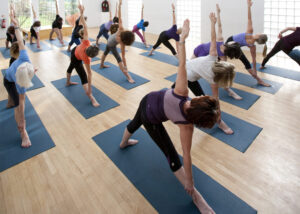Hatha Yoga is one of the most popular forms of yoga you will find and it is generally at the top of most classes. However, Hatha Yoga is a blanket term that is used to describe any form of yoga that combines asanas (poses) with pranayama (breathing exercises). Most of the popular forms of yoga many people practice as a hobby falls under the term hatha yoga.
Hatha yoga refers to a broad variety of yoga practices. The following article aims to let you see how hatha yoga functions and how you can benefit from performing it. We will also briefly look at the history of yoga and show you how to practice it.
Definition Of Hatha Yoga
As mentioned, hatha yoga is a blanket term that is used to describe a variety of yoga practices that combine breathing with functional movement. In the United States, yoga forms like Vinyasa and Ashtanga also fall under the umbrella of hatha yoga, but every form that includes movement and breathing will be under the blanket.
Nowadays, “Hatha” has evolved as a term in the United States. In the last couple of years, it is used to describe a “slow-paced yoga that focuses mostly on proper alignment and improving the breathing of the yogi. Even though Vinyasa is part of the umbrella,It is a faster form of yoga, and Hatha is mostly reserved for slower-paced movements in which the practitioner slowly guides the yogis through the movements.
Keep in mind that the meaning of Hatha yoga differs from the East to the West. When looking at the direct meaning of the word “HATHA”, If you look at the direct translation, it means“FORCE” or “Yoga of Force”. Additionally, many people also feel that it means attaining a state of yoga through force, but in the west and the United States, it is slightly different.
Another meaning of the word Hatha has been determined in the United States specifically. Many people believe that the “HA” refers to the esoteric sun and the “THA” refers to the moon. As you might notice, the meaning is changed to revolve around creating balance and doing so more slowly and methodically as a yoga practitioner.
Hatha Yoga History
While it is hard to determine how old Hatha Yoga is, there is a common agreement that it traces its origins back to Gorakhnath, who has been credited as the legendary founder of the Kanphata Yogis in the 11th Century. However, you need to keep in mind that it did not arise from thin air and Hatha Yoga comes from older forms of yoga that could have arisen in the 2nd Century BCE.
In popular tradition, Hatha Yoga is also associated with Natha Sampradaya and the founder Matsyendranath. Matsyendranath is celebrated as a saint in many parts of the East, especially in Buddhist tantric. Many people also credit the saint as the founder of Hatha Yoga in many parts around the world.
20th Century
During the 20th Century, many things have changed and more people have started moving towards fitness. Late in the 20th Century, we started seeing the boom of the fitness industry, which means that yoga also evolved in the West. The main focus of yoga moved to the asanas that one needs to perform. The idea is that the more poses you perform, the more physical benefit you can get.
It stands to reason that one will also see yoga evolve even more and as we are in the 21st century, many people are moving towards a state of enlightenment. Instead of only focusing on fitness as we did at the end of the 21st Century, people are now moving back to mental and breathing exercises, which means that Hatha Yoga can move back to what it used to be.
Types Of Hatha Yoga
As mentioned, Hatha Yoga is a modern term that is used to blanket a couple of different forms of yoga. When looking at the different types of Hatha Yoga, you will need to consider these different forms that one can practice. We have isolated a couple of the common forms of yoga that are placed under the blanket term of “hatha yoga”.
Ashtanga Vinyasa Yoga
Ashtanga Vinyasa Yoga is one of the modern 20th Century yoga forms. The practice entails the combination of movements and breathing exercises. Vinyasa is the sequence of movements that an individual will follow. The sequence of asanas will follow one another, creating a routine.
While Ashtanga Vinyasa Yoga is one of the modern forms of Hatha Yoga, it is also the inspiration for power yoga. One can branch power yoga as another type of Hatha Yoga. However, it forms a smaller subsection under the Ashtanga Vinyasa Yoga form, which was created by Hatha yoga anyways.
Iyengar Yoga
Iyengar Yoga is another one of the modern forms of yoga. It is named after its founder B. K. S. Iyengar, who also developed the form of yoga. The main emphasis of Iyengar Yoga is precision and detail and one might notice that some of the classes are slightly longer due to helping the yogi reach that level of precision with each asana.
It is one of the best options for beginners and the practice makes a lot of use of different props, which includes belts and blankets. There are many more props, but the main goal of the props is to make it much easier for a beginner. You will notice that many of the elderly can perform Iyenyar Yoga due to these props.
Vinyasa Yoga
Finally, we should also look at Hatha vs. Vinyasa Yoga. Many people in the Western Hemisphere believe that it also falls under the blanket term of Hatha Yoga. While they share similar poses and movements, the pace is significantly different from one another. Vinyasa is one of the fastest forms of yoga and Hatha is slower and more methodical.
Vinyasa yoga is a fast form of yoga that you can practice, slightly more modern than other forms of Hatha. It is described as a smooth movement of asanas that one needs to follow. However, there are a variety of different asanas that one can perform, which means it is not the same repetitive sequence. Music often accompanies Vinyasa to spice up the routines.
Keep in mind that Vinyasa can be extremely vigorous and people need to have some form of fitness if they are to practice it to the best of their ability. When performing modern-day Vinyasa, you are certainly going to break a sweat, especially when you have a professional teacher.
Health Benefits Of Hatha Yoga
Hatha Yoga is one of the best forms of yoga when you want to make improvements to your health. There are numerous benefits that we have isolated. Many of these benefits will make your life slightly better. Here are some of the top health benefits that one can get from practicing Hatha Yoga:
- Stress Reduction. The stress reduction benefit is one of the top ones you can look for. There are tons of people that constantly have to deal with a lot of stress every day. Hatha Yoga has been proven to reduce the stress of individuals performing it. A recent study reveals that performing hatha yoga for 90-minutes a week for 8 weeks can significantly reduce the stress levels.
- Muscle And Joint Flexibility. If you want to get stronger, you need to work out. Since Hatha Yoga is a strenuous form that can allow you to do numerous different poses, it is great for improving your strength. Additionally, it will also improve your overall flexibility. The more flexibility that you have, the better your movement will be, especially as you get older.
- Core Stability And Strength. As we get older, we generally tend to slouch and the spine becomes weaker. However, your posture is mostly dictated by the strength of your core. Hatha yoga enables an individual to improve their overall core stability.
- Reduction In Depression. When it comes to depression, a large group of the world population are currently suffering from different forms of depression. A study done in 2018 has shown how much yoga can reduce the effects of depression.
Hatha Yoga Practice
Even if you know the theory of Hatha Yoga, you also need to learn some of the asanas if you benefit from it. There are a couple of Hatha asanas that almost everyone can perform. We have isolated a couple of asanas and you can practice them in the comfort of your home:
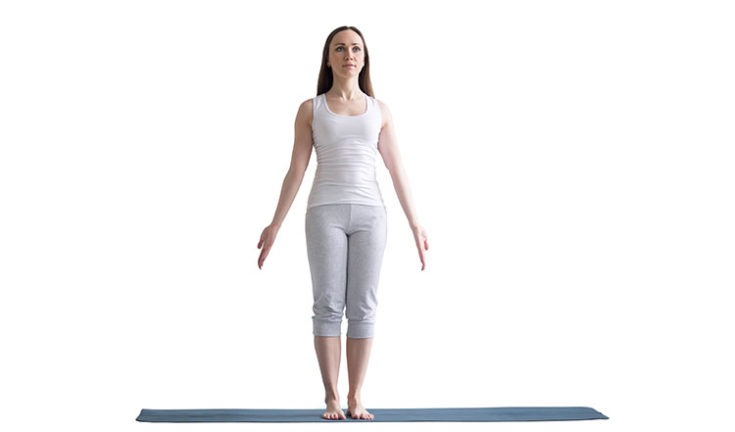
Tadasana (Mountain Pose): The mountain pose is one of the most common poses and it is also a base asana for many other poses. It will improve the core and overall strength of the individual.
Step-by-Step Instructions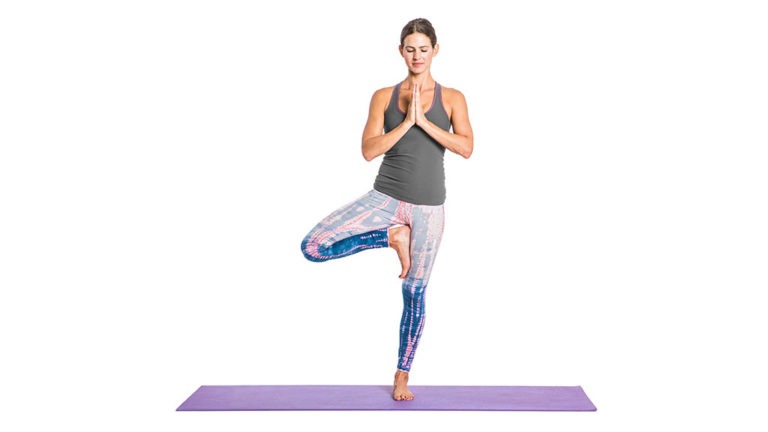
Vrikshasana (Tree Pose): The Tree Pose is one of these poses that sprouts from the Mountain Pose and it is a great option for improving your stability while making sure your core is strengthened.
Step-by-Step Instructions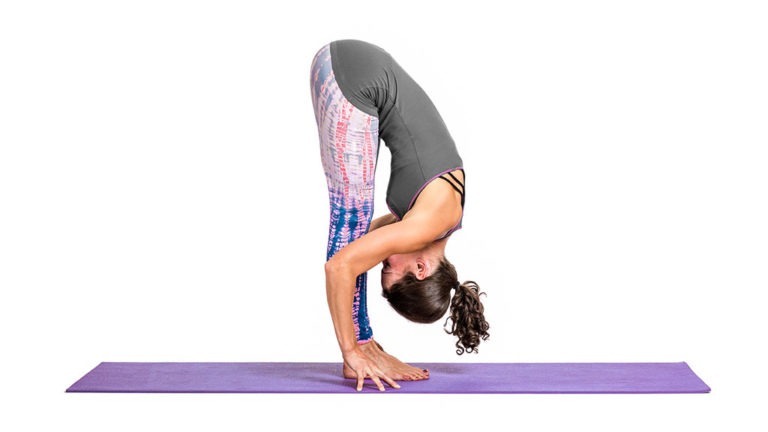
Uttanasana (Standing Forward Fold): If you want to improve the lower body and ensure that you have the best flexibility, the Uttanasana pose is one of the best for flexibility and strength.
Step-by-Step Instructions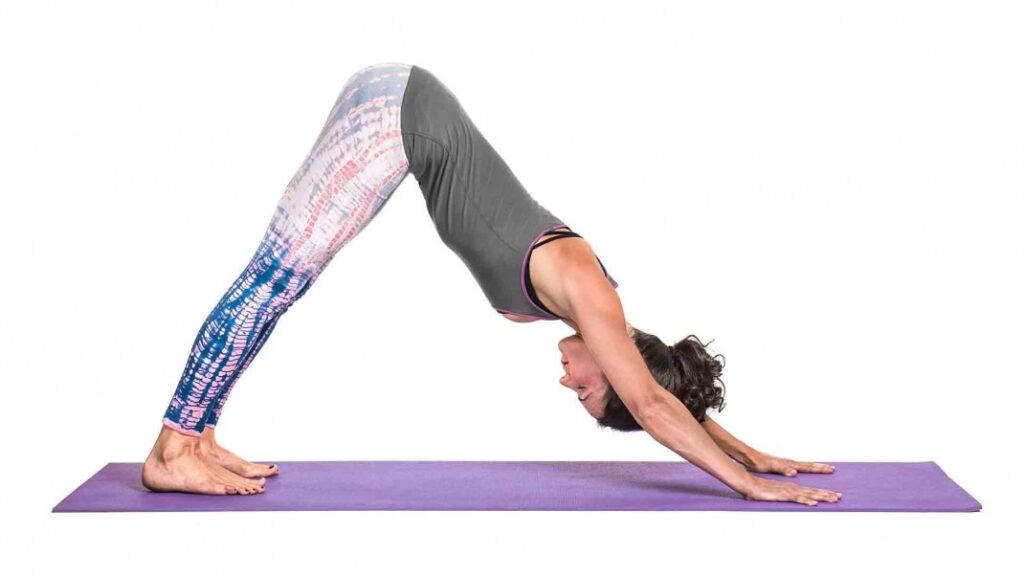
Adho Mukha Svanasana (Downward Facing Dog): Downward-facing dog is one of the most common poses and it will focus on improving your core strength and flexibility in the lower body.
Step-by-Step Instructions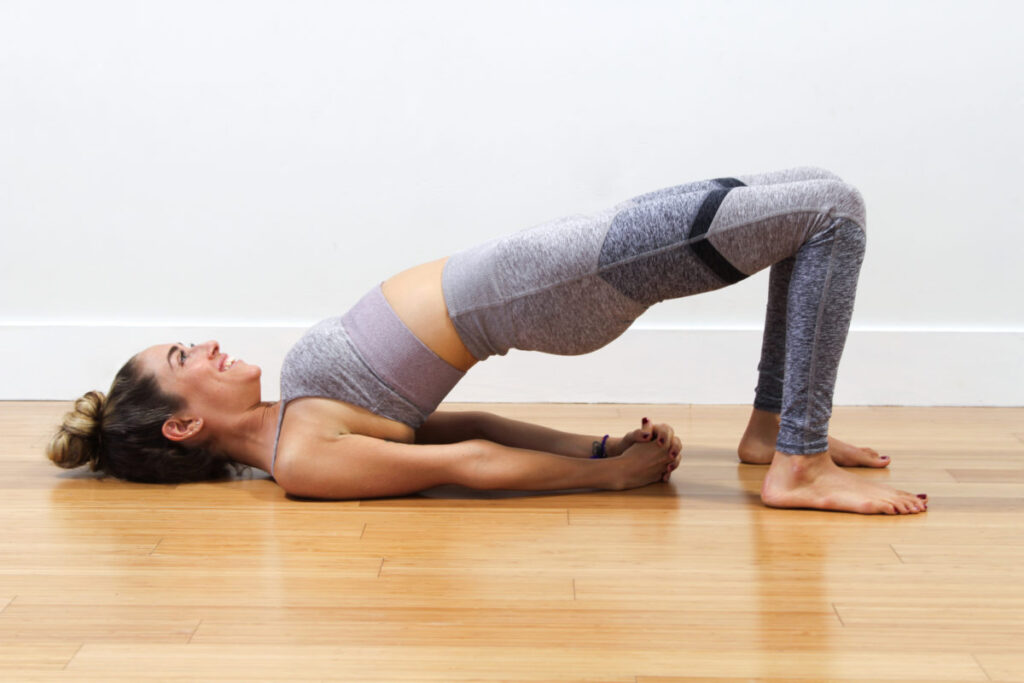
Setu Bandhasana (Bridge Pose): The Bridge Pose is a great option for improving the strength of the hamstrings. However, it should be great for beginners looking to improve certain aspects of the body.
Step-by-Step InstructionsWhile these are only a few of the top asanas, there are many more that one can choose from.Many of these asanas are for beginners, making it easier to get started. As you progress and become more advanced, there are different poses that you can look into to give you even more flexibility and overall strength.
What To Expect From A Hatha Yoga Class
Hatha is the type of yoga you envision when you think of yoga. However, the classes are a combination of fun and hard work that will improve your lifestyle. There are a couple of things you can expect when you join a Hatha yoga class:
Duration
The duration of these classes will vary from one teacher to the other. However, most classes range between 45-minutes to 90-minutes. Many classes that revolve around meditation might be slightly shorter depending on the teacher.
Hatha Yoga Practice
During the time of the class, you will be performing asanas. These asanas range from anchor poses that one starts from, moving to harder poses that could be slightly more difficult. However, you might encounter poses that you feel uncomfortable with performing. It is important that you consult your teacher to get modified poses.
Meditation
As the class draws to a close, you will end with a little bit of meditation. The meditation can be on your own if you prefer it. However, most teachers will guide you in some meditation to help calm the mind. Generally, it involves lying on your back, but Tibetan Singing Bowls can also be used.
Hatha Yoga Books
Almost every form of yoga dates back to the early years of humankind and there have been many scriptures and books written about it and how you can perform it. The more knowledge you have about the poses and the history of Hatha Yoga, the more complete it will be. It will be much easier for you to perform it as well. We have selected three of the top books, you should look into:
If you want to learn more about the life of yoga and have a brief history of yoga, the Light on Yoga by BKS Iyengar is one of the best books. It will educate you on the fundamental principles of the practice. Additionally, the book also features a couple of asanas. It is a great option for beginners that want to break into the world of yoga.
The Heart of Yoga is one of the basic books that one can use to get started. This book gives you a step-by-step guide that will show you how to transform your home into a special yoga studio. There are numerous programs and most of them will ensure that you can find the specific routines that match your specific level.
One of the most important things you need to keep in mind is the history and the science of yoga. While we have discussed some of the special benefits, you must back those benefits up with science. The Science of Yoga is one of the top books that will introduce you to the benefits from a scientific perspective.
Wrap-Up
Hatha Yoga is one of the oldest forms of yoga that one can perform and you will get some great benefits when you practice. We hope that you have found all the information that you might need on Hatha Yoga. Let us know in the comment section if we have missed any important aspects.
Frequently Asked Questions
Hatha Yoga has tons of benefits and these include many physical benefits like reducing stress and depression. It is commonly included in physical education due to the ability to attain a perfect equilibrium.
The number of calories that one can burn will depend on a couple of things, including your weight and the intensity of the yoga. The average 160-pound person should burn around 183-calories for every 60-minutes of Hatha Yoga. However, this is only at a basic level with low intensity.
Vinyasa Yoga is one of the most vigorous forms of yoga one can perform. Hatha and Vinyasa both use many of the same asanas and principles. However, the main difference is the pacing of the classes. Vinyasa is slightly more vigorous and one can burn more calories.


